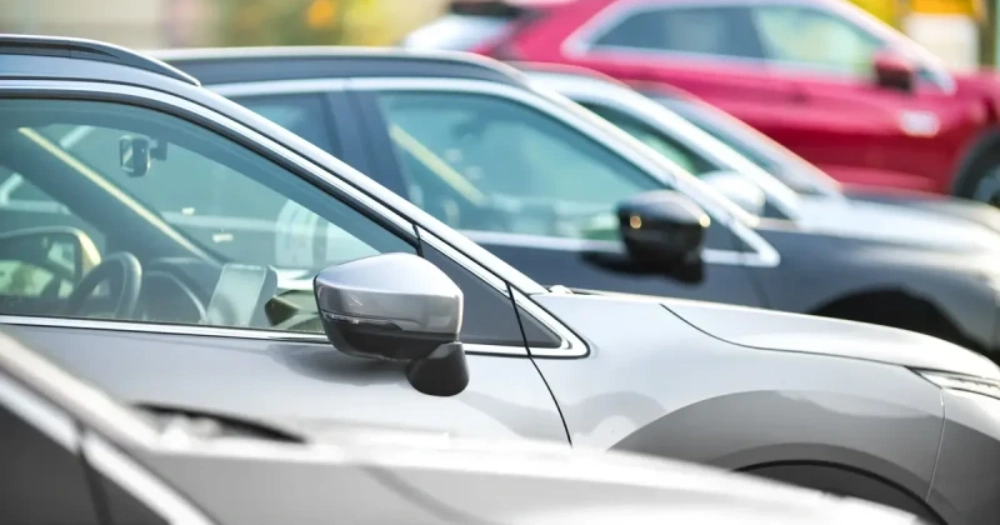
Parking mode is a feature on dash cams that allows the camera to continue recording even when your vehicle is turned off. Unlike the standard driving mode, which only activates when the engine is running, parking mode is triggered once the engine is off, ensuring that important events such as bumps, hits, or other incidents—are captured while your car is parked.
In parking mode, the dash cam relies on technologies such as motion detection or impact sensors (like collision detection) to start recording. Typically, the camera alternates between two modes: Low-Voltage Parking Mode or Time-Lapse Mode. These modes help conserve battery life while ensuring that the camera only records when necessary, such as during an incident.
This feature is particularly recommended for those looking to add an extra layer of security to their vehicle when it’s parked. With parking mode enabled, you have reliable evidence in the event of any unexpected incidents.
Advantages of Dash Cam Parking Mode
Parking mode enhances your vehicle's security when it is left unattended. This feature ensures that any suspicious activity or incidents, such as hit-and-runs, theft attempts, or accidents, are captured while your car is parked. For drivers who regularly park in high-risk areas, parking mode provides an extra layer of protection by recording valuable evidence during these events.
In addition to improved security, parking mode offers peace of mind. With a dash cam in parking mode, your car is continuously monitored even when you're not around. This means you can rest assured knowing your vehicle is being safeguarded without the need for additional devices or constant supervision.
Three Common Types of Parking Mode
Dash cams offer various parking mode options to cater to different security needs. The three most common types of parking modes include motion detection, impact detection, and time-lapse recording. Each type comes with its own set of benefits and limitations, allowing users to choose the most suitable mode for their specific requirements.
Motion Detection Parking Mode
Motion detection mode activates the camera to start recording whenever it detects movement near the vehicle. If something enters the camera's field of view—whether it's a person, another vehicle, or any other motion the dash cam will automatically begin recording the event.
Pros:
- It saves energy as it only records when motion is detected.
- It can capture video of suspicious people or objects around your car.
Cons:
- It may record false alerts from small movements like animals or trees moving in the wind.
- It needs a clear view of the surroundings, which can be limited in certain parking spaces.
Impact Detection Parking Mode (G-sensor Mode)
Impact Detection parking mode, also called G-sensor mode, automatically activates the dash cam when it detects impacts such as collisions or bumps. This mode monitors sudden changes in the vehicle's motion and signals the camera to start recording the event.
Pros:
- Perfect for detecting accidents, parking lot bumps, or damage.
- Provides crucial evidence in the event of a hit-and-run or collision while your vehicle is parked.
- The camera might not record if the impact is too minor or not strong enough to trigger the sensor.
- Some false triggers can occur in areas with heavy traffic or vibrations.
Time-Lapse Record Parking Mode
Time-lapse recording mode captures photos at fixed intervals, ranging from seconds to minutes, and stitches them into a continuous video. This mode minimizes the dash cam's power consumption while providing a comprehensive overview of activities around the vehicle.
Pros:
- It is power-efficient and allows the dash cam to record for long periods without draining the battery.
- Limited ability to capture high-detail footage because the video is made up of intermittent images.
- Great for monitoring longer periods of time, such as overnight or when the vehicle is parked for several hours.
- Not good for capturing fast-moving events or details of accidents.
Power Source Options for Parking Mode
Parking mode requires a constant power supply to operate while the vehicle is parked. This can be achieved through two primary options: hardwiring and battery packs.
Hardwiring
Hardwiring involves connecting your dash cam directly to your vehicle's electrical system, typically via the fuse box. This setup provides a stable power supply, allowing the dash cam to function even when the engine is off. By using a dedicated fuse, the dash cam can draw power independently of the vehicle's ignition, ensuring uninterrupted operation in parking mode.
Pros
- Provides continuous power without depleting the vehicle's battery.
- Eliminates the need for recharging or replacing batteries.
- Ideal for long-term parking mode use.
- Supports advanced features like motion and impact detection.
Cons
- Requires installation, which may need professional assistance.
- Can potentially drain the vehicle's battery if not configured correctly.
Best Dash Cams with Parking Mode
Choosing the best dash cam with reliable parking mode features requires careful consideration of key factors. Look for a model that offers high-quality recording, efficient power consumption, and advanced functionalities to ensure optimal performance and protection while your vehicle is parked.







